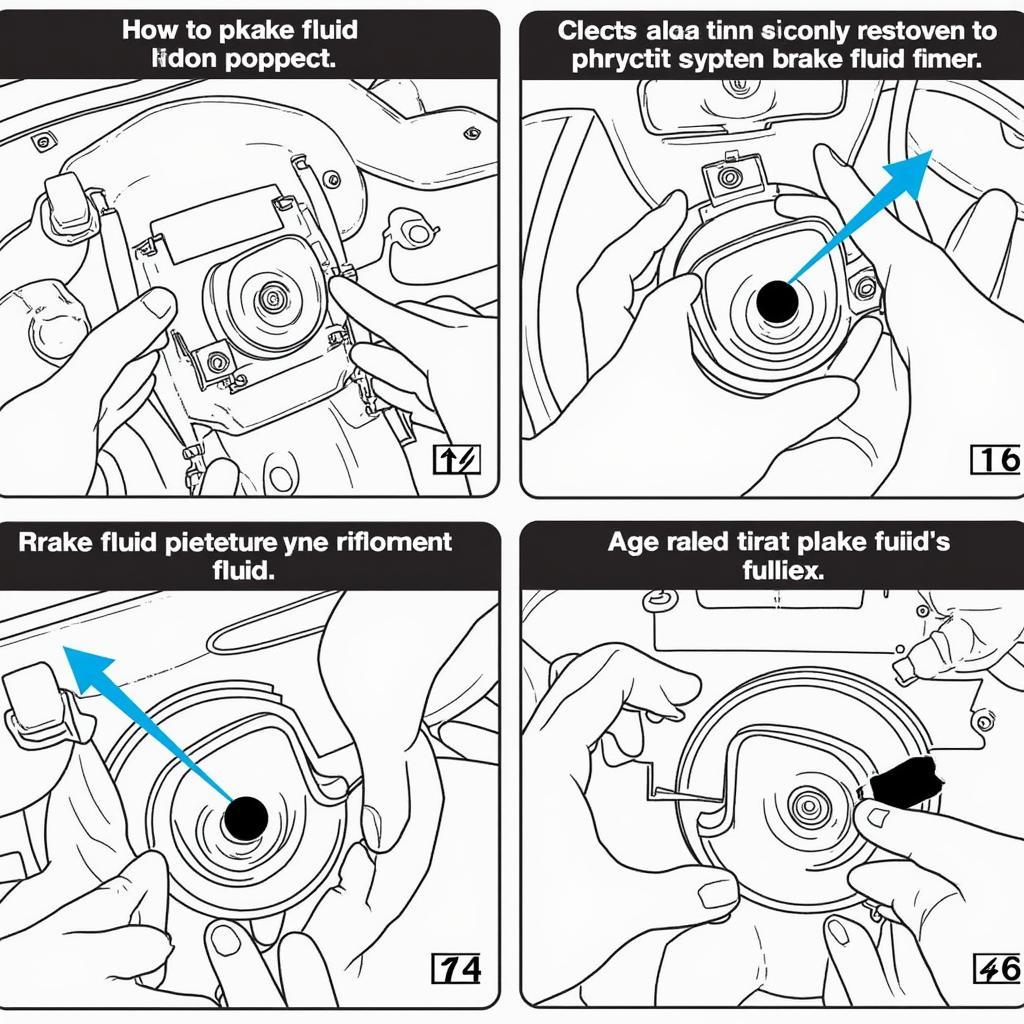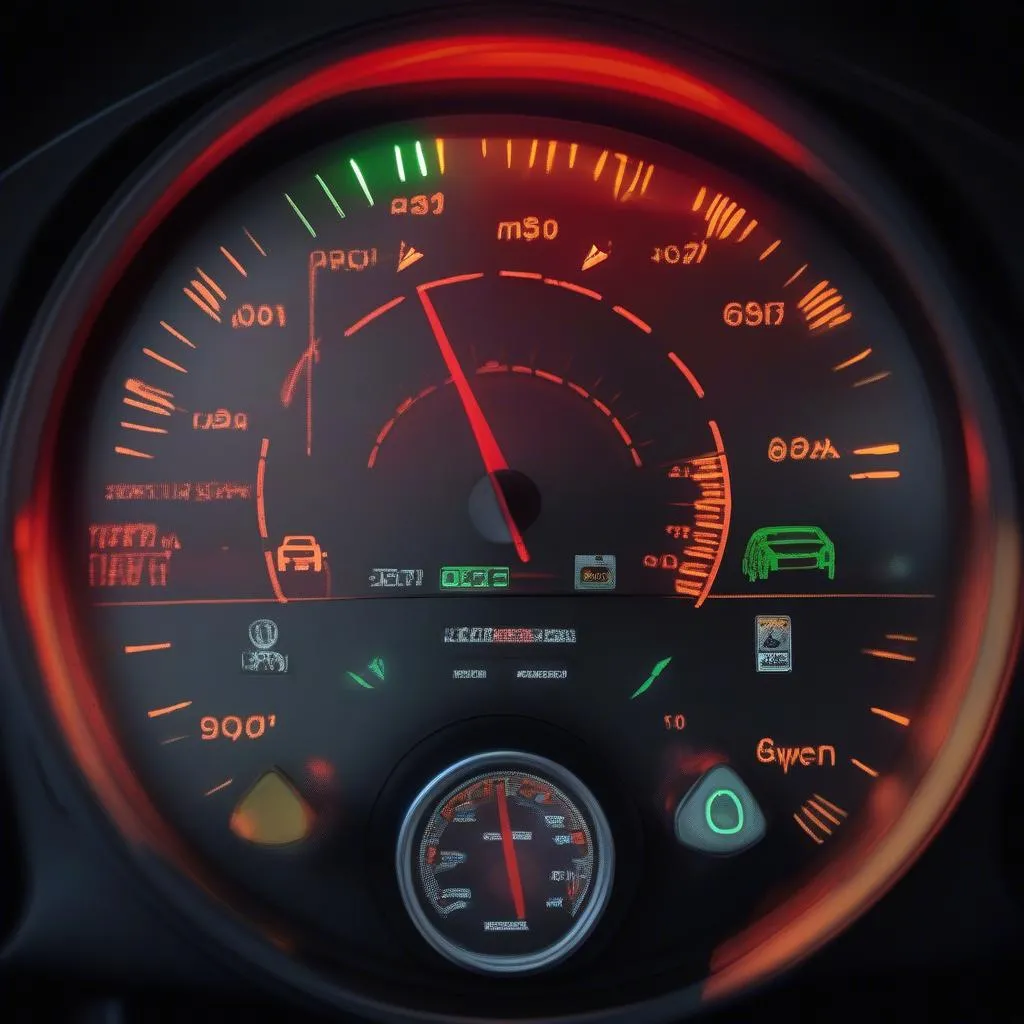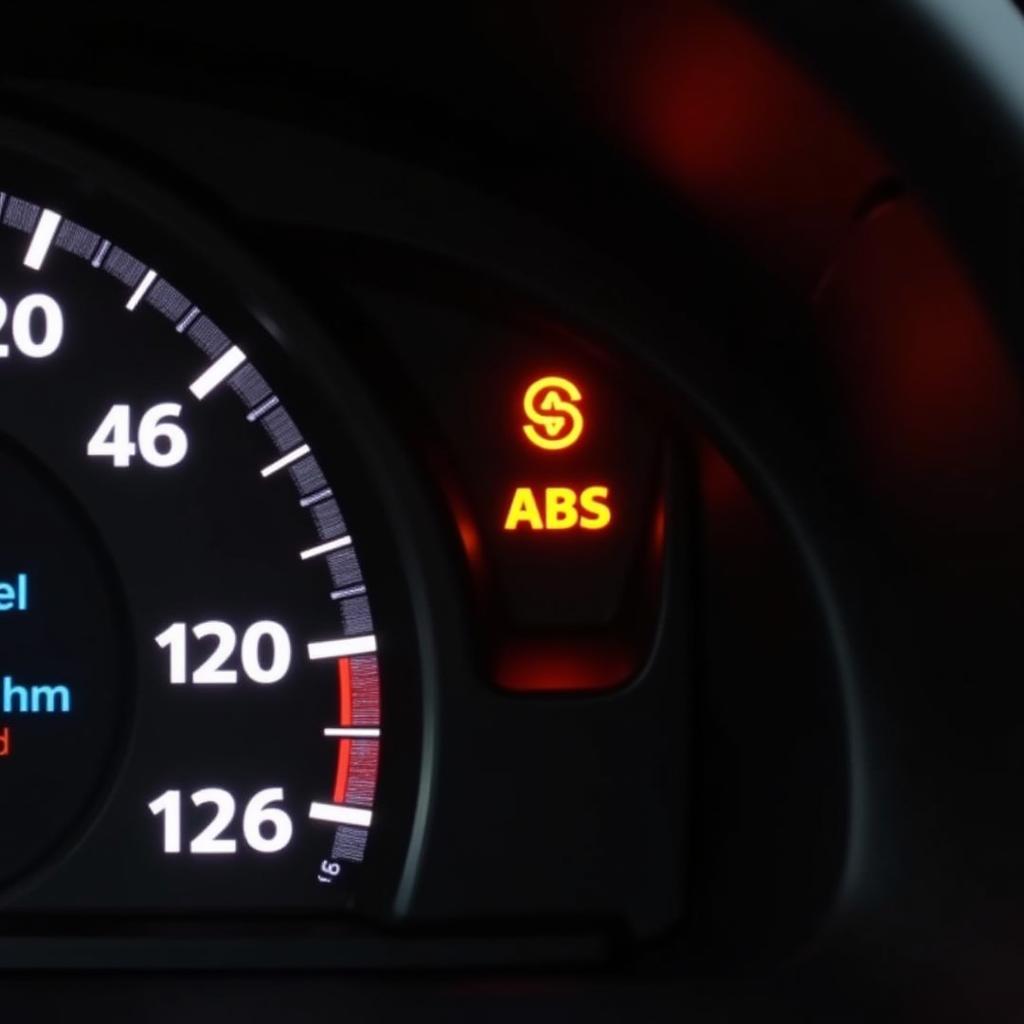The dreaded brake pad warning light on your Range Rover can be a stressful sight. It usually means one thing: it’s time for new brake pads. While this is a routine maintenance task, understanding why it’s crucial and how to address it can save you from headaches (and brake failures) down the road.
Understanding Your Range Rover’s Brake System
Your Range Rover’s braking system is a complex network of components designed for optimal performance and your safety. Here’s a quick breakdown:
- Brake Pads: These are the workhorses of your braking system. Made of a durable friction material, they clamp down on the brake rotors to slow or stop your vehicle.
- Brake Rotors: These are the large metal discs located behind your wheels. When you apply the brakes, the brake pads create friction against the rotors, generating the stopping force.
- Brake Calipers: These hydraulic components house the brake pads and push them against the rotors when you press the brake pedal.
- Brake Warning Light: This light on your dashboard is a crucial safety feature. It illuminates to alert you of potential issues within the braking system, including worn brake pads.
Why is My Range Rover Brake Pad Warning Light On?
The most common reason for the brake pad warning light to illuminate is simple: your brake pads are worn down.
Over time, the friction material on the brake pads gradually wears away with use. When the pads reach a certain thickness, a small sensor embedded within the pad comes into contact with the brake rotor, triggering the warning light on your dashboard.
While worn brake pads are the primary culprit, other less common issues can also trigger the warning light:
- Faulty Brake Pad Sensor: Like any other electrical component, the sensor itself can malfunction. This could lead to a false warning, even if your brake pads are in good condition.
- Low Brake Fluid: Brake fluid is essential for transmitting hydraulic pressure from the brake pedal to the calipers. If there’s a leak in the system and the fluid level is low, the warning light might illuminate.
- Issues with the Brake Caliper or Rotor: Problems with the caliper (like a seized piston) or a warped brake rotor can also trigger the warning light.
What to Do When the Brake Pad Warning Light Comes On
Don’t panic! While a warning light related to your brakes might seem alarming, it’s important to stay calm and address the issue promptly. Here’s what to do:
- Reduce Your Speed and Drive Cautiously: If you notice the brake pad warning light, reduce your speed and maintain a safe distance from other vehicles. Avoid sudden braking.
- Find a Safe Place to Stop: As soon as possible, find a safe location to pull over and assess the situation.
- Check Your Brake Fluid Level: If you feel comfortable doing so, you can check the brake fluid level in the reservoir. If the level is low, it indicates a leak that needs immediate attention from a qualified mechanic.
- Contact a Certified Technician: Whether you suspect worn brake pads or a more complex issue, it’s crucial to have your Range Rover inspected by a certified technician specializing in Land Rover vehicles. They have the expertise and tools to diagnose the problem accurately and perform the necessary repairs.
 Checking brake fluid level on a Range Rover
Checking brake fluid level on a Range Rover
Can I Still Drive with the Brake Pad Warning Light On?
While you might be tempted to continue driving, the answer is a resounding no.
Driving with worn brake pads is incredibly dangerous. Your braking distance will increase significantly, putting you at risk of an accident. Additionally, continuing to drive with worn pads can damage the rotors, leading to more costly repairs.
Think of it this way: the brake pad warning light is an early warning system, giving you time to address the issue before it escalates. Ignoring it will only worsen the problem and potentially compromise your safety and the well-being of others on the road.
Range Rover Brake Pad Replacement: What to Expect
Replacing brake pads is a routine maintenance procedure for all vehicles, including Range Rovers. Here’s a general overview of what to expect:
- Inspection: A certified technician will begin by thoroughly inspecting your entire braking system, including the pads, rotors, calipers, and fluid lines.
- Brake Pad Replacement: If the inspection reveals worn brake pads, the technician will replace them with new, high-quality pads specifically designed for your Range Rover model.
- Rotor Resurfacing or Replacement: Depending on the condition of your rotors, the technician may recommend resurfacing them to ensure a smooth surface for the new pads. In cases of excessive wear or damage, rotor replacement might be necessary.
- Brake Fluid Flush: It’s generally recommended to have your brake fluid flushed and replaced every two years or as recommended by your Range Rover’s service schedule. This ensures optimal braking performance and prevents corrosion within the system.
Preventative Maintenance: Keeping Your Range Rover Brakes in Top Shape
Like any other part of your vehicle, your brakes benefit from regular maintenance. Here are some tips to keep your Range Rover’s brakes in optimal condition:
- Adhere to the Recommended Service Schedule: Your Range Rover owner’s manual outlines a specific maintenance schedule, including brake inspections. Following this schedule can help you catch potential issues early on.
- Be Mindful of Your Driving Habits: Aggressive driving with frequent hard braking puts excessive strain on your brake pads. Aim for smoother acceleration and braking to prolong pad life.
- Address Warning Signs Promptly: Never ignore warning signs like the brake pad warning light, unusual noises (squealing, grinding), or vibrations when braking.
Range Rover Brake Pad Warning Light Reset
After replacing your brake pads, the warning light on your dashboard should automatically reset itself once you start driving and apply the brakes. However, if the light stays on, it could indicate a problem with the sensor or a need for a manual reset.
Important Note: Attempting to reset the brake pad warning light yourself without proper knowledge and tools is not recommended. Always consult with a qualified technician to ensure the job is done correctly and safely.
range rover sport brake pad warning light
Conclusion
The brake pad warning light on your Range Rover is a crucial safety feature, alerting you to potential issues with your braking system. While worn brake pads are the most common reason for the light to illuminate, other factors might be at play.
Remember: Addressing brake issues promptly is paramount. Never ignore warning signs and always seek the expertise of a certified technician specializing in Land Rover vehicles for accurate diagnosis and repair. By staying proactive with maintenance and responding promptly to warning signs, you can ensure your Range Rover’s braking system continues to deliver the performance and safety you rely on.


